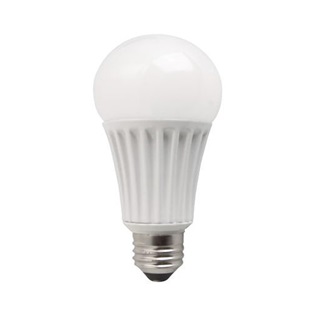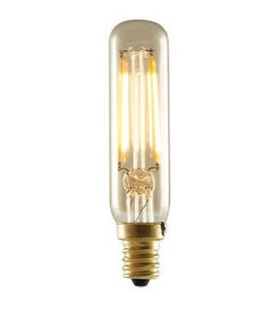There is more than one way for a light bulb to produce visible light. An electric current can be passed through a filament—creating either incandescent or halogen light— between two electrodes in a gaseous tube, which is called fluorescent lighting. Another method is to electrify a semiconductor diode, which utilizes a light-emitting diode (LED). This is regarded as the safest and most efficient method to produce light.
While some have resisted the switch to LED lights, the US Department of Energy notes that an increasing number of people have begun to see the benefits, and that in the future, the standard light bulb will likely shift from the incandescent bulb to the LED bulb. As the cost of LED bulbs continues to drop, and the benefits continue to make more sense to homeowners, business owners, and institutional leaders alike, LED will continue to be the better, brighter lighting solution throughout the world.
Here are the best qualities of an LED light bulb:
SAFETY
Because an LED bulb produces light without heating a filament or gas, there is no risk of burning surrounding objects. Even leaving an untended LED bulb for a long period of time beside thin fabrics or dry plants is safe. A lit LED bulb is safe to touch and does not overheat like an incandescent bulb. This means that an LED bulb will not burn out and pop in the way a traditional bulb would. It would also not experience heat loss. Furthermore, while an incandescent bulb cannot provide “instant on” lighting due to a delay caused by heating the filament, LED bulbs are capable of illuminating instantly.
Atlanta Light Bulbs, a commercial and industrial lighting specialist, offers Philips’ A-shaped LED light bulbs as a replacement for everyday lighting uses. These bulbs match the luminosity of other light bulbs while delivering the safety benefit of a heatless source.
ULTRAVIOLET LIGHT
 Since it doesn’t require gas or produce any heat, an LED light doesn’t create ultraviolet light. While the amount of UV light emitted by other light bulbs is small and considered safe, UV rays are known to cause long-term health problems.
Since it doesn’t require gas or produce any heat, an LED light doesn’t create ultraviolet light. While the amount of UV light emitted by other light bulbs is small and considered safe, UV rays are known to cause long-term health problems.
Atlanta Light Bulbs offers Feit’s BR30 and A19 bulbs, which are both red spectrum enriched. This wavelength, though not UV, is capable of activating photosynthesis and growth in plants.
DURABILITY
An LED light bulb does not burn out like other bulbs. Rather, it will lose luminosity and the color of the light produced will shift. Though standard white light may dim and become slightly blue in color. This eventual color shift marks the end of the LED bulb’s lifetime.
A traditional incandescent light bulb may last about 5,000 hours. Halogen bulbs last even less—sometimes just 3,000 hours. An LED bulb, however, can last four or five times longer. The TCP A21 bulb has a dimmable LED bulb rated for 25,000 hours with a 5-year warranty.
While swapping out a light bulb for your average residential application is a fairly minor burden, consider larger lighting systems for industrial, municipal, or educational institutions, such as warehouses, streetlights, or universities. Using LED lighting, as opposed to traditional incandescent bulbs, can not only be cost effective, but can save enormous amounts of time and other resources, while also reducing the potential danger to employees responsible for changing bulbs in high-risk environments.
EFFICIENCY
 The efficiency of a light bulb is measured primarily by how well it produces light. This is expressed in a formula that generates a bulb’s lumen-to-watt ratio. The higher the ratio, the more efficient the bulb.
The efficiency of a light bulb is measured primarily by how well it produces light. This is expressed in a formula that generates a bulb’s lumen-to-watt ratio. The higher the ratio, the more efficient the bulb.
The traditional lumen-to-watt ratio of a standard incandescent bulb is between 13 and 18, while a CFL bulb’s range is between 55 and 70. On the other hand, the average lumen-to-watt ratio of an LED light bulb is 100.
Furthermore, LED manufacturers have been increasing product efficiency year after year. It is predicted that by 2020, LEDs should reach a ratio of 150 or greater.
According to Clean Technica, the efficiency of an LED bulb may accrue $135 or more in savings during the lifetime of the product.
TO LED OR NOT TO LED
LED lighting products are a smart replacement for traditional lighting sources. The wide range of Atlanta Light Bulbs’ LED and OLED products are low cost and highly efficient bulbs that minimize risk.
Author bio:
Carolyn Clarke is a freelance writer from Seattle, Washington. She has written about construction, architecture, and city planning. When she isn’t writing, she likes to walk through the Emerald City with her dog Alf.